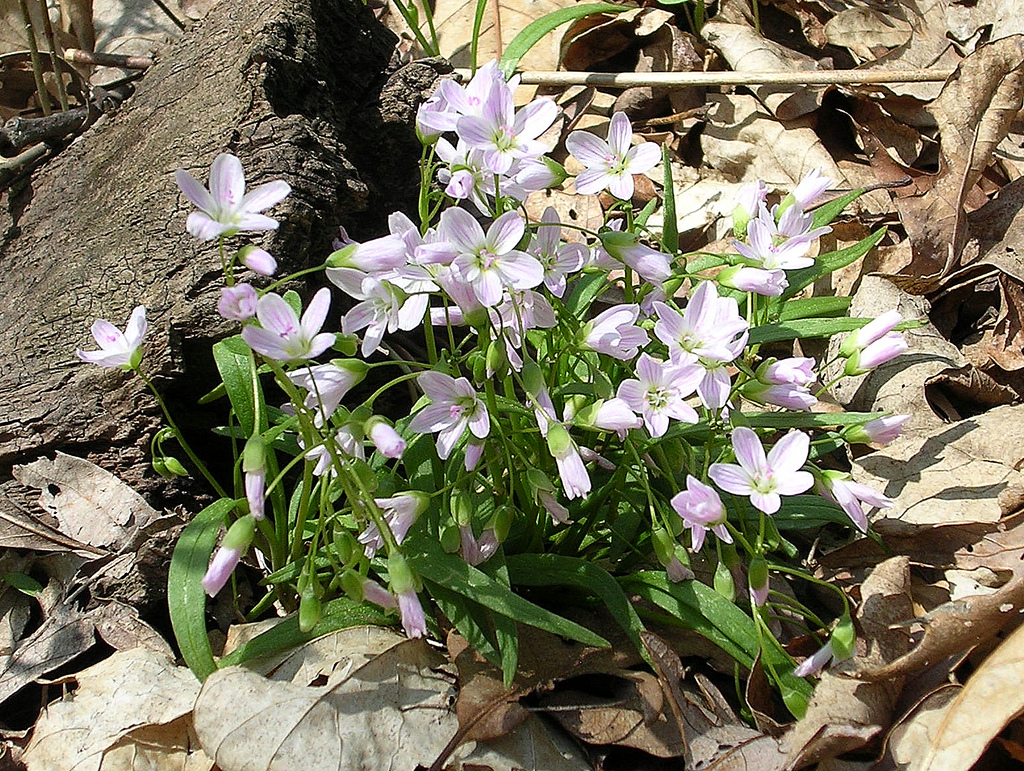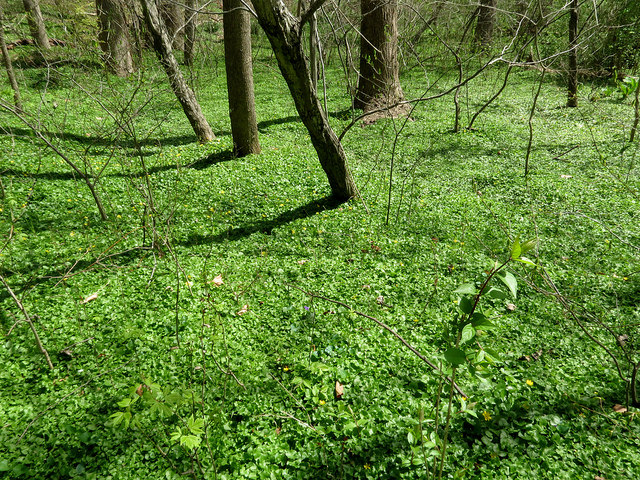 I grew up near stands of what passes in northeast Illinois for old-growth forest. The definition of “old-growth” is apparently a work in progress. I take it to mean a forest that was there before a particular part of the country was cleared and settled, and in northeast Illinois that was pretty late, around the 1830’s.* So these forests were named for local farm families that my family knew: Egermann Woods, Goodrich Woods, Greene Valley Woods. One forest that wasn’t named was behind our little farm — bottom of the hayfield, across the creek, and up a rise to the woods.
I grew up near stands of what passes in northeast Illinois for old-growth forest. The definition of “old-growth” is apparently a work in progress. I take it to mean a forest that was there before a particular part of the country was cleared and settled, and in northeast Illinois that was pretty late, around the 1830’s.* So these forests were named for local farm families that my family knew: Egermann Woods, Goodrich Woods, Greene Valley Woods. One forest that wasn’t named was behind our little farm — bottom of the hayfield, across the creek, and up a rise to the woods.
The woods was shaded by the treetops, not much on the ground except leaves, big rocks, moss, some grasses I think, and for sure wildflowers: shooting stars, dutchman’s breeches, may apples, jack-in-the-pulpits, spring beauties,** and in one place, yellow violets.
The woods had no suggestions for what to do except to look at things, sit down and lean against a big tree for a while, then get up and see what was beyond the next tree. Back by the creek was a willow, easy to climb, that I sat in a lot, not thinking. We weren’t supposed to go down to the woods — partly because it was someone else’s property and mostly because our mother couldn’t see us — so that was part of the draw. The real reason we snuck down there over and over, time after time, for years was – I don’t know quite how to say it. It was deeply comfortable, you could breathe slowly, you felt lighter, it felt like you’d come home.
So decades later, in the city on the east coast, when my neighborhood got its shorts in an uproar over a local private school’s plans to clean out a tiny woods, I went to look at the woods. The trees were scrawny, the ground was covered with ivy and brambles, and I thought, “What a wretched little woods.” The school could have cut that woods to the ground and the only ones suffering would be the displaced rats.
 Years after that, I read Emma – “Coming of Age in a Trash Forest” — on the subject of urban nature and the silliness of trying to return it to its original and pure ecology, the “Big Pristine,” she calls it. She’s talking about the environmentalists’ swerve toward the realistic.
Years after that, I read Emma – “Coming of Age in a Trash Forest” — on the subject of urban nature and the silliness of trying to return it to its original and pure ecology, the “Big Pristine,” she calls it. She’s talking about the environmentalists’ swerve toward the realistic.
Every day, almost every day, most days, I walk along the streets of one of the most densely-populated neighborhoods in the city, and admire and criticize my neighbors’ gardens, though I keep any unfriendly opinions to myself. At the bottom of the hill is a little creek, a “stream” or a “run,” they call it here. Along the far side of the creek is a dirt path that on a map runs through a green space. The woods around the path are, I admit, green.
The trees are spindly, their habits misshapen; they’re covered with honeysuckle, English ivy, and poison ivy which will crown and kill them. The vines are all over the ground too, and stands of weeds are head-high, no way you can walk off the path to the creek, you can’t get through and you’d fall over anyway. Some of the stands are jewelweed, gold and crimson flowers. Some places have been carpeted by the lethally-invasive lesser celandine, such a beautiful name; they’re the glorious yellow of buttercups and the small shiny leaves look soft and bouncy. Daffodils, lilies, and Japanese cherry trees have escaped from nearby lawns. I saw a blue heron in the creek; a mallard couple lives there. Kids sort of live there too: invasive bamboo has been cut to make lean-to hide-outs; dead branches and vines are laid out carefully over swampy patches. Good and bad taken together, though, the woods are still unlovely; they’re full of aggressive plants and weak trees; they have their beauties and uses but they’re not home.
But who still thinks “home” is a place you can get to any more? Who thinks it’s a place you’re even remembering rightly? If you went back there, would it even feel like home? Isn’t “home” the place you are right now and where you’re likely to stay awhile? Isn’t it a place you find the best in, and that best is good enough for anyone? I miss my old woods and the relief of their comfort. But this “green space” I have now, it’s going about its life with verve — stupid and inept maybe, but full of beans. And maybe the bed of lesser celandine, maybe it would be nice to sleep on.
_______
*The French and Indians were there much earlier — see the old place/river names – but they weren’t clearing and farming acreage. I apologize for going on about this but I’m always surprised by the lack of history in northeastern Illinois.
**These are local names, maybe local even to my family, and not necessarily the flowers you’d see if you google-imaged them.
_________
spring beauties by Jay Sturner, lesser celandine by Katja Schulz, both via Flickr
Our suburban woods were behind and next to our house and the woods from which our lot and four others were developed in 1958. A shut-in named Miss Florine Carney owned them and we all called her “Aint Rine”. There were many paths, sink holes, hiding spots, hedge apple and hackberry trees, and stickers of various types. We didn’t care about the types of anything in those woods. Many fun things happened in those woods, and a few really bad things too. That hallowed ground is now an asphalt church parking lot.
You’re making Emma’s point exactly — well, not exactly because she’s interested in the environmental movement spinning its wheels and you’re interested in what went on in a hallowed woods. Never mind: the point is that the Big Pristine is neither necessary nor possible.
>> Isn’t “home” the place you are right now and where you’re likely to stay awhile? <<
So true. I live in the developed desert that is San Diego and for years and years I've wanted to move somewhere "pretty". You know: Trees. Streams. Hills to wander in. Rocks to hop.
Lately I've realized that over all that time I've been missing just enjoying "Here" and "This Moment". Something I think about more and more. Life is short. Am I missing it by longing for something else?
“Isn’t “home” the place you are right now and where you’re likely to stay awhile?”
So true. I’ve spent much of the last 12 years wishing my current home was more like “home,” where there are hills and beautiful trees and wilderness, only to finally realize that my adopted home has its own beauty and nature, if only I stop comparing it to what I knew before.